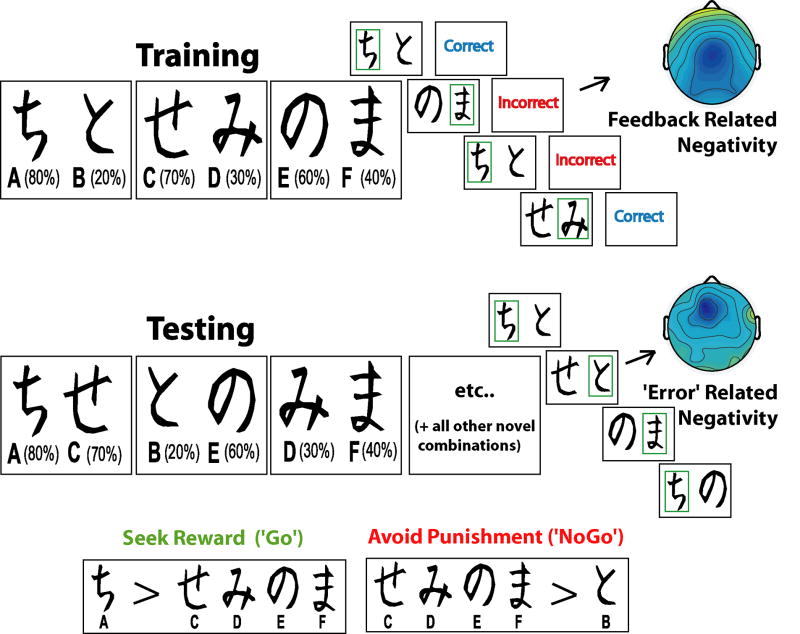Figure 1.
Example pairs of stimuli and trial runs for training and testing sets of the probabilistic learning task. During training, each pair is presented separately. Participants have to select one of the two stimuli, slowly integrating ‘Correct’ and ‘Incorrect’ feedback (each stimulus has a unique probabilistic chance of being ‘Correct’) in order to maximize their accuracy. In the course of the testing phase, each stimulus is paired with all other stimuli and participants must choose the best one, without the aid of feedback. Note that the letter and percentage are not presented to the participant, nor are the boxes surrounding the choice. An example FRN is shown to ‘Incorrect’ feedback during Training, and an example ERN is shown to a suboptimal choice during Testing. Participants learn this task during training by a combination of seeking the most rewarding stimulus (Go learning) or avoiding the most punishing stimulus (NoGo learning), which are assessed during the testing phase.

